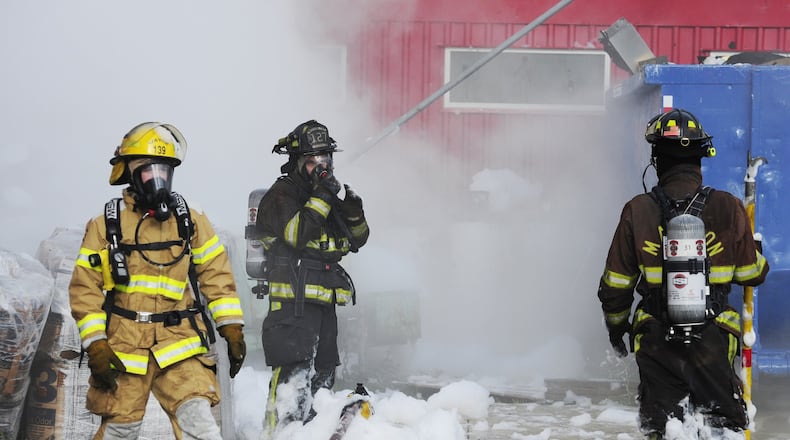House Bill 158 passed in the House by a vote of 95-1. The bill now heads to the Ohio Senate.
Versions of the legislation have received wide support in the legislature since state Rep. Brian Baldridge, R-Winchester, introduced it in 2019.
It’s an important law because PFAS affects everyone, he said. Local governments, particularly those in the Dayton region, have been influential in terms of expressing concerns about the group of chemicals, he said.
“This is the chance for the legislative body of the state government to engage on this issue as well,” Baldridge said. “Not only for the safety of our firefighters and training situations, but also from a standpoint of our water quality and the issue of the water table that has been affected.”
HB158 proposes that Ohio fire departments be required to find an alternative to firefighting foam containing PFAS. The legislation also proposes that fire departments be limited to using PFAS-based foam only for testing if the facility where it’s being used has a way to contain the chemical and prevent it from going into the environment.
Credit: FILE
Credit: FILE
State Rep. Phil Plummer, R-Dayton, was added to the bill as a co-sponsor just before the vote on the Ohio House floor. The toxins have been found in some of his neighbors’ wells in Montgomery County, which he said will certainly lower their property values.
“But if we limit the use of (firefighter foam in) firefighters training, we can eliminate some of it in our water systems because this doesn’t just go away,” he said.
Exposure to per- and polyfluoroalkyl substances ― or PFAS ― can affect pregnancy, increase cholesterol levels and cause some forms of cancer, according to the U.S. Centers for Disease Control and Prevention. Infants and children, pregnant and nursing women, and those who have a compromised immune system may be at a higher risk of health effects as well.
The materials dubbed “forever chemicals” because of their longevity were detected in Aullwood Audubon Farm Discovery Center’s drinking water system in 2020. Levels of the contaminants have also been detected in several private wells in nearby neighborhoods.
HB158 is a significant measure that will protect and ensure the safety of the state’s water systems and human health, said DeBonne Wishart, geoscience professor and environmental scientist in the International Center for Water Resources Management at Central State University.
Although PFAS has been detected in only 6% of Ohio’s public drinking water systems and mostly at levels below the recommended level of 70 parts per trillion, it is still a matter of environmental concern, she said.
“The next logical step would be to identify the sources, depth and extent of the PFAS contaminant plume in the Dayton region and around the state, followed by remediation plans for minimizing environmental and human health concerns,” Wishart said.
For decades, the Dayton Fire Department used PFAS-based foam at its fire training center, 200 McFadden Ave. The city stopped using the product in recent years. PFAS-based firefighting foams also have been used at Wright-Patterson Air Force Base.
In 2018, Dayton filed a federal lawsuit against several companies that make firefighting foam to help with the cost of cleaning up PFAS. The companies include 3M Company, Buckeye Fire Equipment Company, Chemguard Inc., Tyco Fire Products L.P. and National Foam Inc.
The city recently filed another lawsuit seeking damages of up to $300 million against Wright-Patterson Air Force Base and the U.S. Department of Defense, accusing them of failing to stop water containing PFAS from flowing daily into the city’s Mad River Wellfield. The base and DoD have disputed the city’s claims, saying the groundwater near the base boundary is below the U.S. Environmental Protection Agency’s recommended action levels.
“(HB158) is a responsive and responsible approach to increase the safety of our brave men and women who risk their safety to protect their own,” Baldridge said. “By banning use of PFAS in training settings, we are choosing to prioritize the health of our citizens and our environment.”
About the Author



